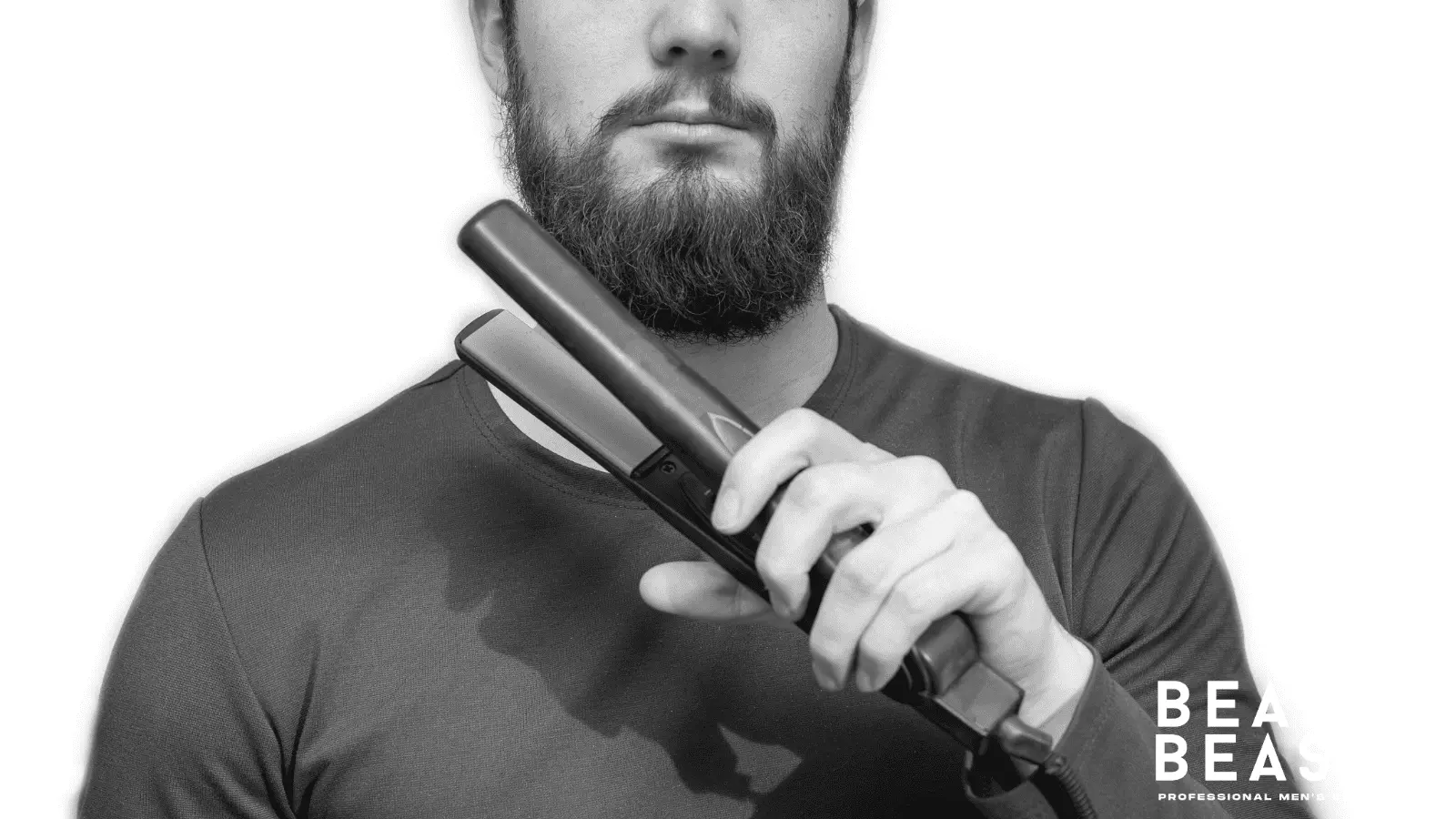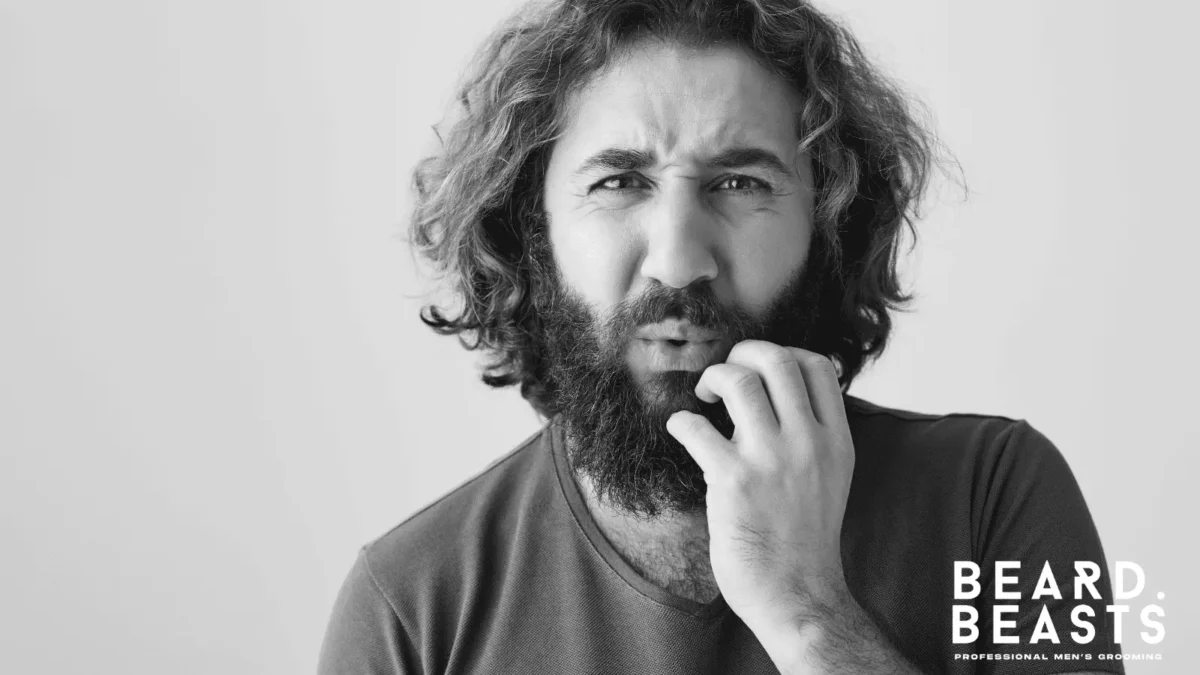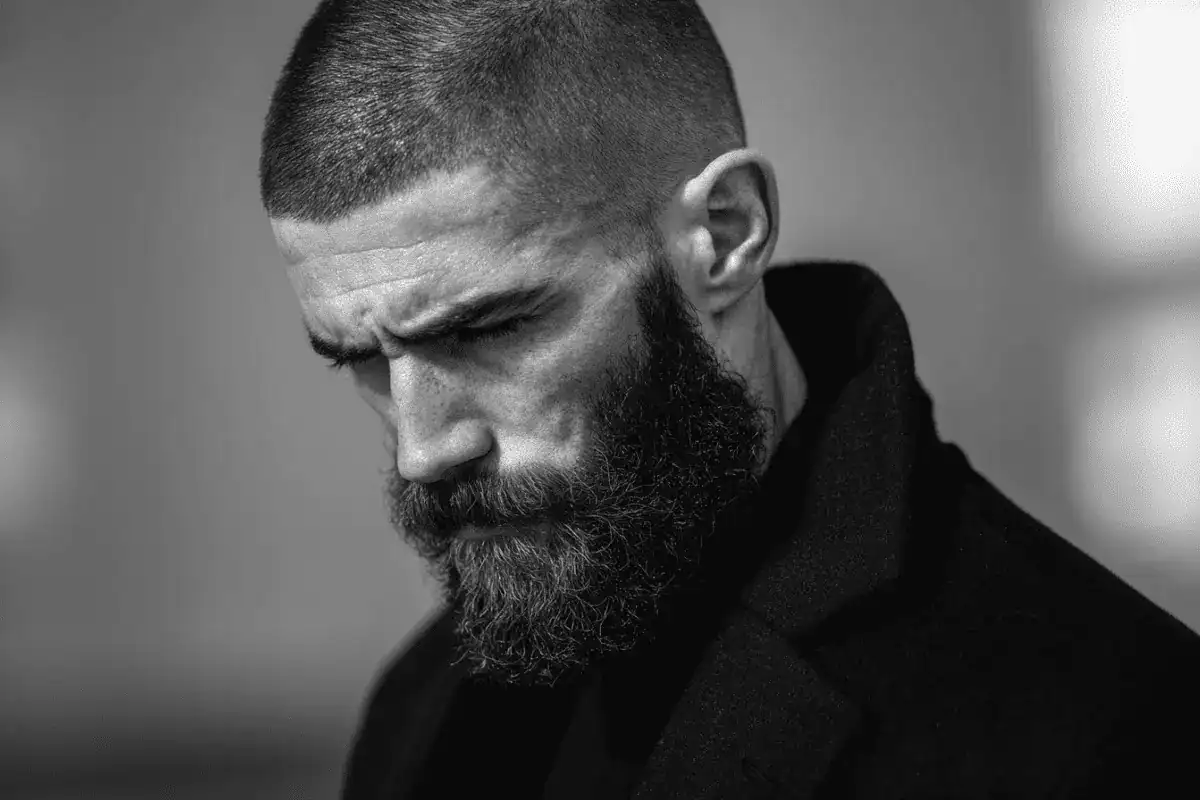Managing a short beard can be frustrating. Competing growth directions often create bulk and uneven texture, leading many men to ask: Do beard straighteners work on short beards?
Before you apply heat, it’s vital to understand how short hair responds and whether a straightener will support—or disrupt—early growth. The guide below breaks down the limits and proper use of heat for shorter lengths.
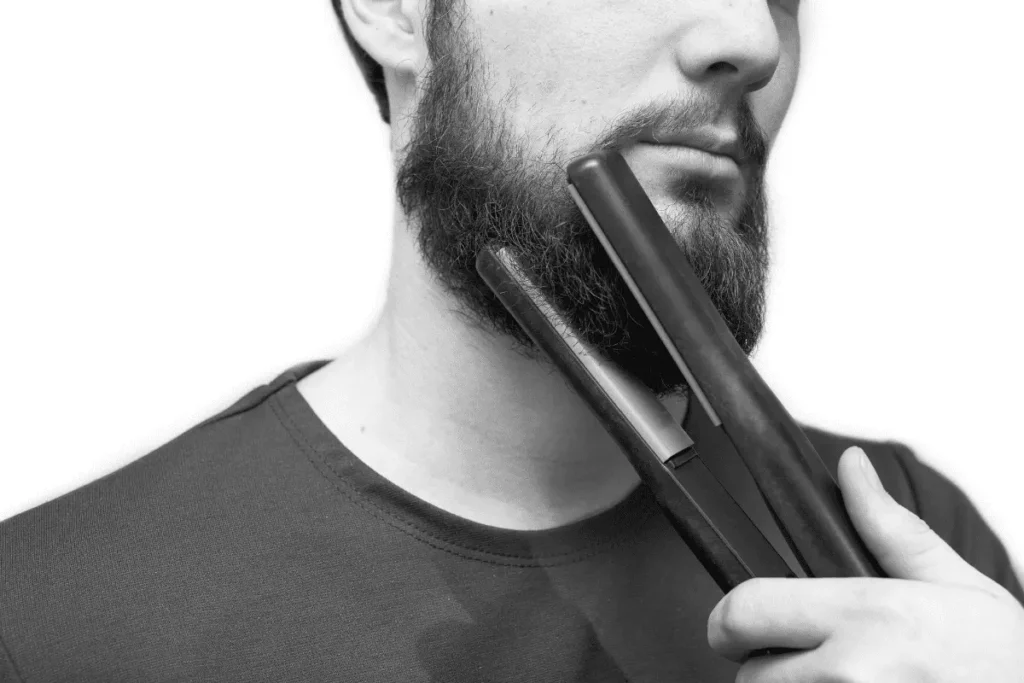
Do Beard Straighteners Work on Short Beards?
Beard straighteners can work on short beards, but their impact is limited. Short hair simply does not provide enough length for a straightener to grip, stretch, and redirect with full precision. At this stage, heat should be viewed as a tool for guiding the beard into a cleaner direction—not as a way to alter its structure or produce a flat, pressed finish.
A Note on Tool Selection: Tool choice determines how effective heat will be. With short beards, heated brushes are far more practical than flat irons. A brush can pass through short hairs to influence direction, while a flat iron requires more length to create tension without risking skin contact.
When used purposefully, heat on a short beard can soften texture, reduce bulk, and support daily grooming. Its role is refinement, not transformation.
Straightening is most practical when:
- The beard resists normal brushing.
- Cheek and jawline growth creates width or puffiness.
- Tight waves make shaping or applying product difficult.
Heat can irritate the skin and disrupt early growth if applied carelessly. When applied thoughtfully, it encourages a well-kept look as the beard gradually develops density and length.
Minimum Beard Length for Heat-Based Straightening
Heat tools become effective only when the beard is long enough for bristles or plates to grip the hair without excessive skin contact. For most men, this begins at:
1.0 to 1.5 inches (2.5 to 4 cm)
At this point, the beard has enough structure for heat to influence direction consistently. Anything shorter leaves minimal surface area for a straightener to engage, reducing its effect and placing heat too close to the skin.
Why Length Matters
Short beard hairs behave more like coarse stubble than fully developed strands. They:
- Lack the density and leverage needed to stay straighter after heat.
- Sit upright or at varied angles due to root dominance.
- Respond better to brushing, balm, and trimming than to concentrated heat.
Once a beard reaches functional length, a straightener can glide through the hair rather than compressing it. This allows cleaner shaping along the jaw and cheeks while limiting unnecessary heat exposure.
The “Scratch Test”: A Simple Rule of Thumb
If a comb or beard brush cannot pass through your beard without scraping the skin, the beard is not ready for a straightener. Train direction with basic grooming until more length develops.
When Straightening Short Beards Makes Sense
Straightening a short beard is not meant to create a rigid, uniform finish. Its purpose is to guide direction so the beard maintains structure, symmetry, and better product performance. Used sparingly, heat can help a short beard appear more controlled and intentional.
Reducing Puffiness and Multi-Directional Growth
Short beards often project outward at the cheeks and jaw corners, creating width. A controlled, low-heat pass can:
- Encourage hair to settle downward and reduce bulk.
- Align direction for sharper edges.
- Support cleaner trimming on cheek and neckline lines.
Preparing the Beard for Styling Products
Beard balm and wax hold better when the beard already follows a consistent direction. Light heat can:
- Create a smoother base for even product coverage.
- Improve hold and shape longevity.
- Support sharper results with less effort.
Softening Tight Waves and Kinks
Some textures curl even at short lengths. Light straightening can:
- Relax early curls without over-trimming.
- Increase visible length naturally.
- Reduce daily grooming time by softening stiffness.
A short beard performs best when its natural direction is guided rather than forced. Heat should assist the beard’s structure as it grows—not replace it.
Risks of Using Heat on Short Beards
Short beards are more vulnerable to heat because they offer less coverage over the skin and less mature hair to withstand stress. Careless technique can interfere with early beard growth and weaken developing fibers.
Skin Overheating and Burns
With minimal length, heated bristles and plates sit closer to the face. Improper technique can:
- Cause burns or irritation.
- Disturb follicles beneath the skin.
- Dry the skin, leading to flaking beneath the beard.
Weakening Developing Hair Fibers
Short hairs are still building durable cuticles. High heat can:
- Dry and weaken the hair shaft.
- Cause breakage close to the root.
- Slow visible progress due to premature shedding.
Loss of Natural Hydration
Heat removes moisture from both hair and skin. With short beards, this can:
- Increase coarse texture and stiffness.
- Create brittle ends that snap, reducing density.
- Disrupt natural oil balance, causing dryness or excess sheen.
Heat should support development—not overwhelm it.
How to Straighten a Short Beard Safely
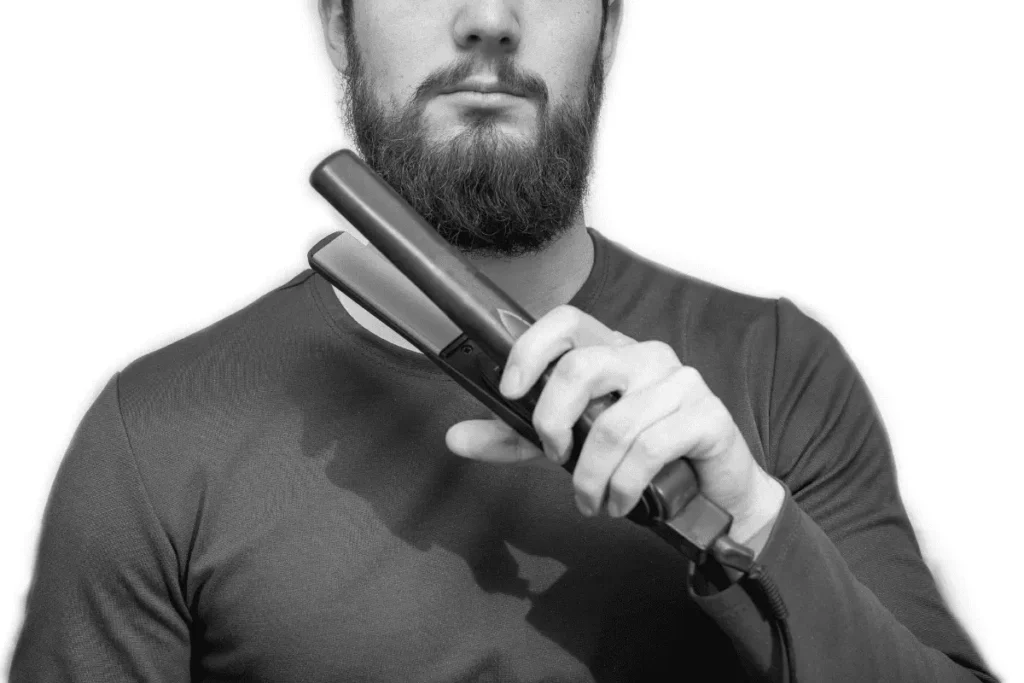
Short-beard straightening requires careful preparation, controlled temperature, and minimal repetition. Because hair sits close to the skin, every step should prioritize protection and precision.
Used correctly, heat can refine early growth without compromising long-term progress.
1. Prepare the Beard First
Heat must not be applied to dry, brittle, or damp hair. Before straightening:
- Wash with a proper beard wash to soften and cleanse.
- Dry fully with a towel or low-heat dryer; damp hair amplifies damage.
- Apply a light beard oil to provide a protective barrier.
2. Use Controlled Heat
Short beards rarely require high temperatures. Higher heat does not improve results—it only increases risk.
- Start at the lowest setting; increase only if necessary.
- Use continuous passes, never holding the tool in one area.
- Glide gently rather than pressing toward the skin.
3. Limit Frequency
Growing beards are developing structure and durability. To avoid weakening them:
- Limit straightening to two or three times per week.
- Avoid heat when the beard feels dry or brittle.
- Prioritize hydration and nourishment between heat use.
Heat should reinforce the structure you are building—not undermine it.rces the structure you’re growing, not when it undermines it.
Alternatives to Heat for Very Short Beards
Beards under 1 inch (2.5 cm) respond more effectively to grooming methods that shape direction without direct heat. These approaches build a foundation that straightening tools can enhance later.
Blow-Drying with a Small Round Brush
A low-heat airflow offers controlled shaping:
- Use warm, not hot, air at a distance.
- Apply light tension to encourage downward growth.
- Work in short, controlled motions to reduce puffiness.
Beard Balm with Daily Brushing
Beard balm offers light hold and conditioning. Combined with brushing, it:
- Trains the beard’s direction gradually.
- Reduces bulk by bringing strands closer together.
- Maintains a crisp outline without frequent trimming.
Routine Precision Trimming
Short beards lose structure quickly when stray hairs interrupt the shape. Trimming:
- Maintains symmetry as length builds.
- Prevents beard split ends from spreading.
- Keeps the beard sharp without relying on heat.
A short beard becomes easier to control when direction is trained consistently. These techniques provide more reliable progress than applying heat too early.
Conclusion
Do beard straighteners work on short beards? They can, but their value depends on length, technique, and restraint. On beards under 1 to 1.5 inches, heat offers limited benefit and may disrupt early development. At this stage, disciplined grooming holds far more value than trying to force a straighter appearance.
Once the beard has enough length to support a tool, heat can refine direction, reduce puffiness, and enhance product performance. Its purpose is to support the beard’s structure—not override it.
In early growth, consistent brushing, balm application, controlled low-heat drying, and precise trimming build the foundation that heat can later refine. A straightener becomes most effective only when the beard is ready to respond to it.

